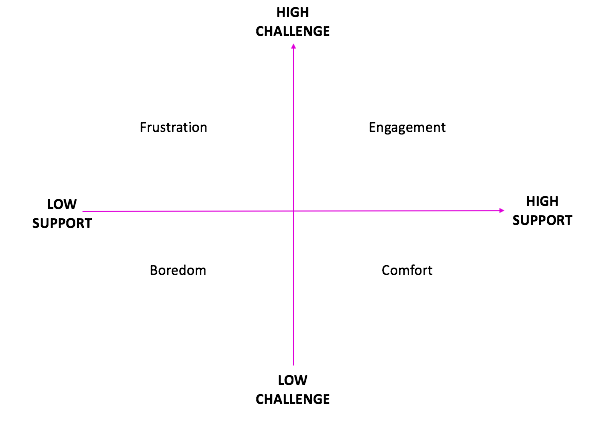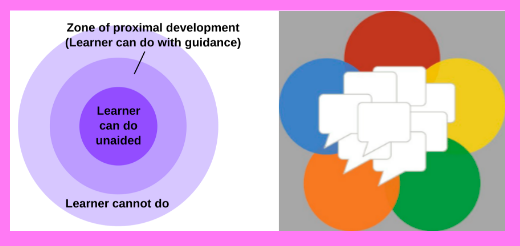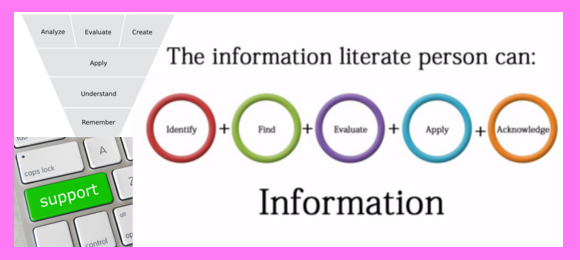Chapter 1 in Gibbons, Pauline. English Learners, Academic Literacy, and Thinking: Learning in the Challenge Zone. Portsmouth, NH: Heinemann, 2009. Print.
- Raising Expectations: Despite research that correlates high student achievement with intellectually challenging curricula, many ELL programs focus on low-level activities. Instead of lowering the level of activities, programs that develop academic literacy should maintain high levels of expectations and support learners to achieve these high expectations with high levels of academic support.
- Literacy in the Middle Years: In middle school, literacy demands ramp up. In upper elementary to middle school, students experience an abrupt shift from “learning to read” to “reading to learn”.
- What is Academic Literacy: Academic literacy means learning to read, write, and think using the vocabulary and thinking processes unique to each discipline. Different subjects have different genres because they evolved different thinking patterns.
- Implications for Teaching Subject Literacy: A first step for scaffolding academic literacy is understanding the specific literacy demands of the subject one is teaching.
- Who are EL Learners? ELLs come from varying language backgrounds and socioeconomic statuses. Lack of explicit literacy instruction creates an achievement gap between EL and non-EL students.
- EL Learners in Content Classrooms: EL learners develop academic literacy slower than conversational fluency. Language-only classes lack lessons in subject-specific academic literacies. Content and content-specific literacy must be developed and taught simultaneously.
- Some Current Perspectives on Intellectual Quality: Intellectually challenging curricula is needed to develop understanding and literacy skills. These curricula include: language learning, explicit teaching, real-life relevance, language-based collaboration work, and learning standards-based goals.
- An Approach to Teaching & Learning: High Challenge & High Support Classrooms: Learning is a collaborative activity (Vgostsky). Use scaffolding to facilitate activities that help learners do more than they can do on their own (Vgotsky’s Zone of Proximal Development). Engage in many academic conversations because outer conversations can become inner speech or thinking patterns over time. High support & high challenge classrooms live in the challenge zone.


Teaching literacy is not limited to English Language Arts classrooms because different subjects speak and think in different academic genres. Understanding the specific literacy load of the content one teaches is a first step in developing scaffolding that supports EL and non-EL learners who are developing fluency in one’s content genre(s). Lowering academic expectations has been proven to have negative effects on student achievement. Instead of lowering standards, one can better support students by maintaining high levels of challenge AND support. The chart that connects student emotions to levels of support and challenge can be used to decode students’ responses to various learning activities so that appropriate adjustments can be made to keep students engaged in learning.
Preparation Steps
- Identify the new vocabulary and thinking patterns that are critical to being successful in specific units or projects
- Research strategies for teaching vocabulary and for managing academic conversations. See Literacy articles for ideas.
- Develop scaffolding activities that teach both content and language/thinking. See Literacy articles for ideas.
- Use challenge vs. support chart to categorize scaffolding activities and insure quality control
Early Implementation steps
- Observe student emotional responses to scaffolding activities and use challenge vs support chart to hypothesize their perception of challenge and support levels of activities
- Use explicit strategies for teaching vocabulary and specific critical ways of thinking
- Facilitate fréquent academic conversations that have high levels of student participation to scaffold development of language and thinking
- Scaffold how students write in content-specific genres
Advanced Implementation steps
- Have students reflect on the development of their language and thinking skills
- Use multiple strategies to develop content and literacy knowledge
- Have students self-assess their perception of activities in terms of their level of challenge and support and offer up suggestions to bring activities into the challenge zone (high level,high support zone)
- Develop routines that lead to deliberate practice of key patterns of thinking, writing, and speaking within content-specific genres









